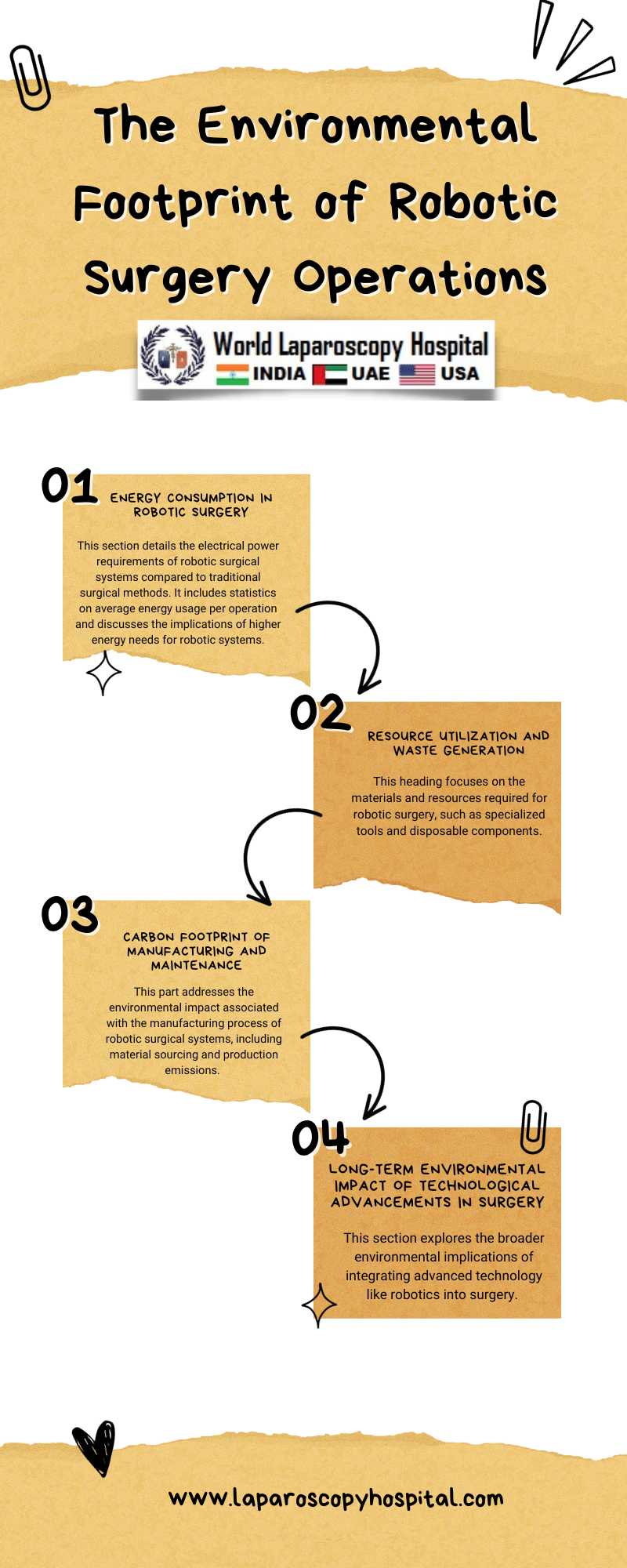The advent of robotic surgery has marked a revolutionary shift in medical procedures, offering precision, flexibility, and control beyond the capabilities of human hands. However, as with any technological advancement, robotic surgery comes with environmental implications. This essay explores the environmental footprint of robotic surgery operations, examining both the direct and indirect impacts on the environment.

Body
1. Energy Consumption
Robotic surgery systems, such as the da Vinci Surgical System, require significant electrical power to operate. The energy consumption starts from the initial boot-up process and extends throughout the duration of the surgery. This increased energy use, compared to traditional surgical methods, contributes to a larger carbon footprint, primarily if the energy source is fossil fuels.
2. Manufacturing and Transportation of Robotic Systems
The environmental impact of robotic surgery begins before the robot even reaches the hospital. The manufacturing process of these complex machines involves the extraction and processing of various metals and materials, which has a considerable ecological footprint. Additionally, transporting these heavy machines to hospitals around the world contributes to greenhouse gas emissions.
3. Waste Generation
Robotic surgery operations generate a unique set of wastes. This includes not just the traditional medical waste but also specialized equipment like robotic arms and tools that may have limited reuse or require specific disposal methods. The disposal of electronic waste is particularly concerning, as it can release harmful substances into the environment if not handled properly.
4. Water Usage
The sterilization of robotic equipment can consume significant amounts of water. While this is also true for traditional surgical tools, the complexity and sensitivity of robotic components may necessitate more rigorous and frequent cleaning processes, thereby increasing water consumption.
5. Indirect Environmental Benefits
On the other side, robotic surgery can offer environmental benefits. For instance, the precision and efficiency of robotic surgeries can lead to shorter operation times and hospital stays, potentially reducing the overall energy and resource use per surgery. Furthermore, the minimally invasive nature of robotic surgeries can result in fewer postoperative complications, which in turn can lead to a decrease in additional medical treatments and their associated environmental costs.
Conclusion
Robotic surgery is a double-edged sword in terms of environmental impact. While it brings unparalleled benefits to the medical field, its energy consumption, waste generation, and resource use cannot be overlooked. It is essential for healthcare providers and manufacturers to work towards minimizing the environmental footprint of these advanced surgical systems. This could involve developing more energy-efficient machines, recycling programs for robotic parts, and overall strategies to balance the benefits of robotic surgery with environmental sustainability.
In conclusion, as robotic surgery continues to evolve, it is crucial to integrate environmental considerations into its development and implementation. Only by doing so can the medical community ensure that the march of progress does not come at the expense of the planet.